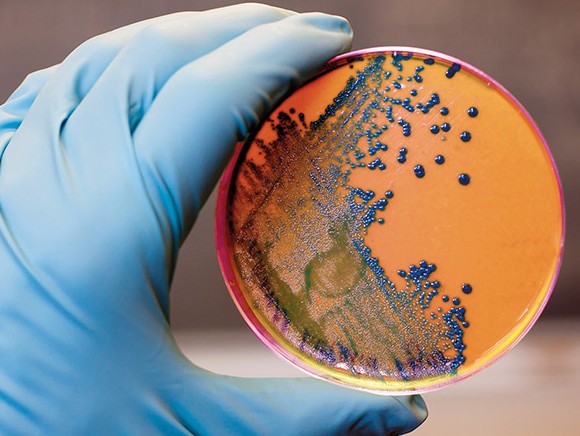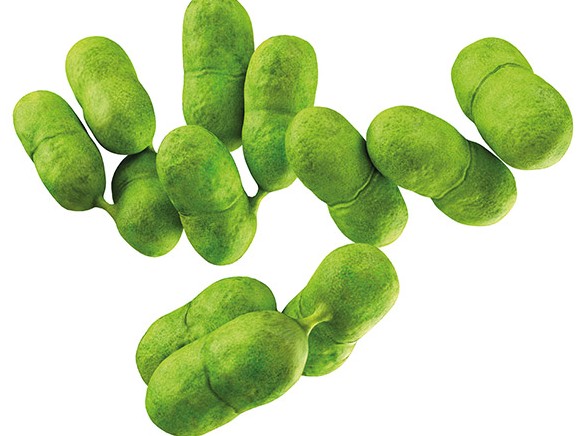
The NVWA (Netherlands Food and Consumer Product Safety Authority) established new guidelines in the updated information sheet 85 for controlling the growth of hazardous micro-organisms during the shelf-life period. It is Listeria monocytogenes that has received the most attention.
Listeria monocytogenes is an illness-causing bacterium that is high risk for products that are cooled slowly before storage if these are eaten without being heated first. The bacteria can grow at low temperatures. It can have serious effects for YOPIs (group of vulnerable consumers: Young, Old, Pregnant, Immunocompromised). The large number of incidents in recent decades indicates how large the risk of infection is. The Listeria outbreak in South Africa, the biggest in the world as of yet according to the World Health Organisation (WHO), has claimed the lives of 180 people. Research from the EFSA indicated that the increased consumption of prepared foods has also increased the number of Listeria infections. For this reason, the information sheet 85 now includes a guideline for producers of food products in which they must thoroughly substantiate the (microbiological) shelf life of the products that they sell.
Producers must ensure that, during the shelf-life period, the growth of any relevant illness-causing micro-organism, particularly Listeria monocytogenes, must remain below the standard. Enhanced regulations and monitoring by the NVWA regarding the substantiation of the shelf life will be increasingly more important in the years to come. Many producers recently received warnings, because they did not substantiate this information properly.
In order to establish the shelf life of the products, a producer can choose from four methods: scientific literature, predictive models, historical data and challenge testing.
The method using scientific literature is practically impossible. There is often not enough literature available that precisely matches with the product and production process in question. For the use of historical data, data on the packaging or portions are required for food in which Listeria monocytogenes naturally occurs after production. There are many measurements (at least 100) required for this to be reliable. That is why this partial study is difficult to conduct in practice.
During a challenge test, Listeria monocytogenes is added to the product for the purpose of assessing the degree to which the bacteria grows afterwards. A challenge test must be conducted according to official guidelines by specialised laboratories. The choice of laboratory and proper method are very important for this. Consulting closely with the laboratory is crucial, because this testing is expensive.
Most producers give priority to predictive modelling in order to gain insight into the microbiological safety and in turn, the shelf life of the product.
In order to use these, it must first be clear which products are involved and whether products with sufficiently similar characteristics (parameters) can be added to one product group. For each product group, you must have access to the following parameters: Aw value, pH value, dry substances, recipe (preservatives, salt content), packaging, current expiry date, storage temperature and destination. Of course, a knowledge of predictive models must be available as well: you have to know which data to plug in and why, after all. Ultimately, you have to be able to interpret the results to arrive at a conclusion on whether the selected shelf-life period can be obtained or not. This requires appropriate experience. Given the number of warnings, it appears that this knowledge is not always available.
The models for predictive microbiology (included in the new info sheet) which the producer can choose from include ComBase and FSSP (Food Spoilage and Safety Predictor). These models can be downloaded and used at no cost.
ComBase is a relatively simple program that is exceptionally well suited to foods other than meat and fish products and to foods with very few additives to influence their shelf lives. In addition to the above-mentioned parameters, this model can be supplemented with data regarding the quantities of lactates, acetates, CO2 and nitrates added in order to gain insight into the effect of these additives on shelf life and the growth of Listeria monocytogenes. Unfortunately, ComBase can only be used to assess the effects of individual additives.
FSSP is exceptionally well suited to fish and meat products, because the program was initially based on studies into smoked fish products. You can include multiple additives at the same time (including smoking components) that work together to stunt growth.

If the study indicates that the microbiological safety cannot be guaranteed, there are a number of solutions. You can modify the shelf life stated on packaging (by making it shorter). If gas packaging is used, you can modify the gas composition of the packaging; more CO2 increases the degree to which growth is stunted.
You can also consider modifying the recipe, so that the Aw and/or pH value is reduced. A final method that can work is increasing the additives that are already used or adding new ones. For the last two options, the labels must be changed as well. If necessary, consult with suppliers, laboratories and consultants.
Source: © KTBA